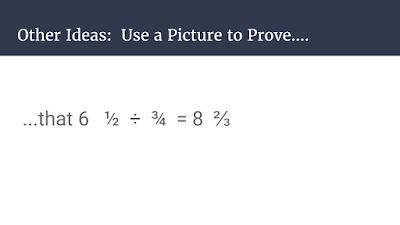A couple of weeks ago, I wrote about why I switched to
giving weekly homework. Over the three years that I have done this, I have definitely made a couple of adjustments that have helped this system work better for me.
One of the adjustments that I've made has to do with grading. In my class, I hand out the homework on Friday, and it is due the following Thursday. The day the homework is due, I pass out red pens, project the answer key on the SMART Board and kids check their own work. When I enter homework in the grade book, I enter a completion grade, rather than grade the assignment based on the number correct.
One reason I like this system is that I feel like it lets me focus on the big picture. When I'm entering the regular score for a homework assignment, I don't have to look closely at every problem for every student. However, I give each paper a quick scan to make sure that it was completed. As I grade, I look for patterns. If I notice that one problem was skipped or missed frequently, I know that this is an area that needs more attention in future assignments, as students did not feel as comfortable with this content. Because I'm only having to enter homework grades once a week, I have time to look for these patterns. I also can look for students who are struggling with multiple concepts.
However, this system was frustrating for me (and my more studious students) at times. I know that there were a few students who put little effort into the assignments, knowing that their grade was not necessarily determined by the number correct. This year, I have implemented another part of my grading system. Each individual homework assignment is still entered into my grade book graded on completion. It is usually 5 points per week. Each week, I randomly choose about 6 students whose assignment also gets graded based on a "Homework Quality Rubric".
This rubric looks at several characteristics of the assignment. The rubric is based on six categories: Assignment Completeness, Accuracy and Knowledge, Work Quality, Math Language, Legibility/Organization, and Student Reflection. I feel this gives me a chance to reflect important characteristics on how students are doing at completely a quality piece of work.
- Are the answers correct?
- Did they complete every problem?
- Did they show their work?
- Is their work organized and easy to follow?
- Did they label their answers?
- Did they use correct vocabulary?
Because I'm only having to grade about 6 of these per class, I can take a little bit more time to look in detail at these factors.
At the beginning of the quarter, I put student names on all of the rubrics. Then each week I can randomly pull some from the pile to use. Students get very specific feedback about how to improve the quality of their work, and since they don't know when it will be the week that they will be graded, there is an incentive to put quality effort into the assignment.
The second adjustment that I've made to my
homework system is new this year, and I love it! This year, I started adding some student choice and differentiation to my homework assignments. Each assignment is a worksheet, front, and back. Everyone is expected to complete the entire front side. The back side of the assignment is divided into three sections. Two of the sections focus on skills practice. The third section is usually called "Open-Ended Problem Solving". This section is intended for students that don't need skills practice, as a way to push them.
 |
| This was part of the choice section on the back side. At the top of the page, students indicate what section they are choosing and why. During a couple of weeks prior to this, I had noticed many students confusing finding percent vs. percent change after a lesson we had done. We were working on complementary and supplementary angles at the time, and I know some students were still struggling with this. |
This is probably the best adjustment that I've made. The skills sections on the back are a great way to address common errors and misconceptions that I'm seeing in class or on the homework. At the beginning of the year, I used it to review content from previous years. Now as the year has gone on, I am using it more to address class needs. I love that this makes me pay more attention to what my students need. Each week, I know that I'm going to need a couple of skills to work on for the homework, so I'm always on the lookout. If I notice a problem that lots of students skipped or a problem that lots of students missed on a quiz, these become the skills practice areas on my homework. I feel like this has made my homework more relevant to students, as the practice becomes an adjustment to their area of need.

When I hand out the homework each Friday, I briefly go over the three sections. Sometimes I might do a quick review based on the skill. I also let students know why they might want to choose a particular section. "If you missed #5 on the quiz yesterday, you'll probably want to complete section B". In my experience, middle school students are not great at knowing their needs academically. This gives this a chance to practice self-assessment and work choice.
If you're interested in copies of a sample of my weekly homework or the homework rubric, click below.
Homework Quality Rubric
Sample Homework
If you're interested in more tips,
sign up for my email list by clicking here!
Note: My school uses Connected Math curriculum, so my homework follows the pacing and examples of CMP.














































